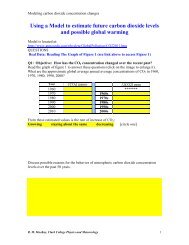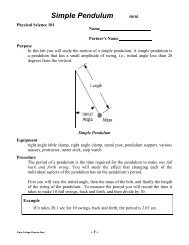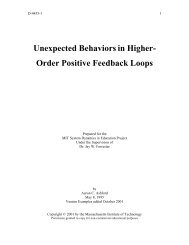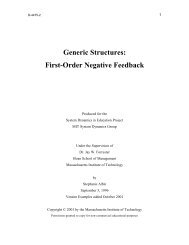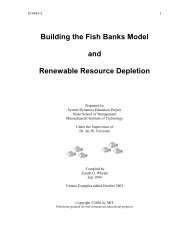ECONOMIC SUPPLY & DEMAND
ECONOMIC SUPPLY & DEMAND
ECONOMIC SUPPLY & DEMAND
You also want an ePaper? Increase the reach of your titles
YUMPU automatically turns print PDFs into web optimized ePapers that Google loves.
6 D-43883. CONVENTIONAL <strong>SUPPLY</strong> AND <strong>DEMAND</strong>3.1 IntroductionThis section deals with supply and demand as sometimes taught in high-schooleconomics classes. The following descriptions of supply and demand assume a perfectlycompetitive market, rational consumers, and free entry and exit into the market.Economists also make the simplification that all factors other than price which affect thequantity of goods sold and purchased are held constant. Economists argue that this is avalid assumption because changes in price occur much more quickly than changes inother factors that may affect supply or demand. Examples of these other factors includechanges in taste, changes in the state of the economy and long-term changes inproduction capacity (such as the construction of a new factory).3.2 DemandDemand is the rate at which consumers want to buy a product. Economic theoryholds that demand consists of two factors: taste and ability to buy. Taste, which is thedesire for a good, determines the willingness to buy the good at a specific price. Abilityto buy means that to buy a good at specific price, an individual must possess sufficientwealth or income.Both factors of demand depend on the market price. When the market price for aproduct is high, the demand will be low. When price is low, demand is high. At verylow prices, many consumers will be able to purchase a product. However, people usuallywant only so much of a good. Acquiring additional increments of a good or service insome time period will yield less and less satisfaction. 3 As a result, the demand for aproduct at low prices is limited by taste and is not infinite even when the price equalszero. As the price increases, the same amount of money will purchase fewer products.When the price for a product is very high, the demand will decrease because, whileconsumers may wish to purchase a product very much, they are limited by their ability tobuy.The curve in Figure 1 shows a generalized relationship between the price of agood and the quantity which consumers are willing to purchase in a given time period.This is known as a simple demand curve.3 This behavior toward aquiring additional increments of a good is called diminishing marginal utility.





